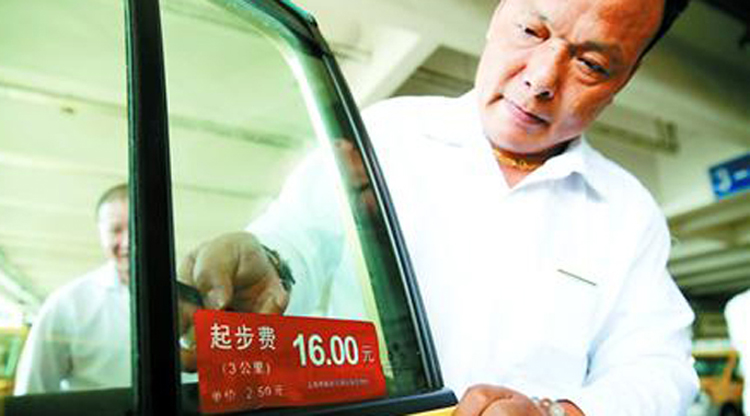If you’ve taken a taxi since the end of the October Holiday, you may have found yourself paying slightly more than usual. In Shanghai’s downtown districts the RMB14 starting fare, which covers the first 3 km of a cab ride, has been raised by one whole kuai. That increase, however, has been offset by the scrapping of the one-yuan fuel surtax, meaning the flag down fare remains RMB14 for regular taxis.
What has gone up is the rate after the first 3 km – each additional kilometer will cost RMB2.5, up RMB0.1 from before. The waiting fare rate is also dearer: you’ll now pay RMB2.5 for every four minutes spent sitting in traffic – it used to be five. So while you might not notice a pricier ride on a short trip, those insignificant-seeming jiaos will add up over a long journey – say from Pudong Airport to your home – and during rush hour.
As for the beloved Expo taxis, the cost of comfort in the spacious Tourans now starts at RMB16.
Don’t despair, though. The Shanghai Transport Commission taketh and it giveth. On the same day the new cab fares came into effect, the transport authority agreed to license local car-hailing app Didi Kuaidi to run private drivers on its platform, reports Shanghai Daily. Didi Kuaidi will need to buy liability to insurance for drivers and passengers, and strengthen requirements for driver selection.
Does this mean Uber’s regulatory woes in China will soon be over? The US company is certainly poised to take advantage of anticipated changes in the national law with a local subsidiary newly registered in Shanghai’s Free Trade Zone. Uber announced that it will transfer all of its China business onto local servers as part of a RMB6.3 billion plan to expand to 100 cities across the country. According to Trading Floor, “this is a clear sign from the US firm that it is doing everything it can to get Chinese regulators to treat it like its domestic rivals.” Time will tell if Uber's gamble pays off.
//This article originally appeared in That's Shanghai


















